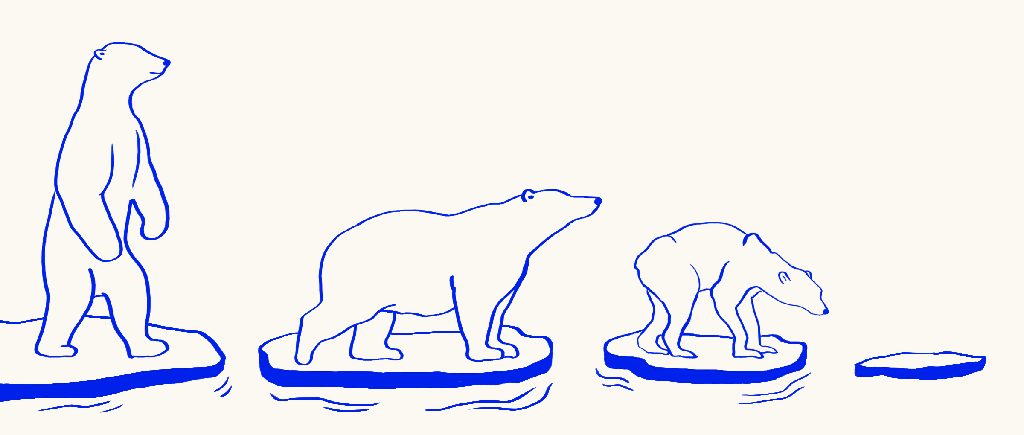A video surfaced of a malnourished polar bear roaming iceless land, scavenging for food. With increasing carbon emissions and greenhouse gases, the planet’s climate is changing. As temperatures rise, ice caps melt and snow depletes, the place polar bears once called home is disappearing. Although many politicians believe global warming is a myth, the conditions polar bears live in is far from imaginary.
The video of this polar bear is gut-wrenching. His bones are pressed against his skin and his lifeless eyes wander for food around the dry land before him.
According to Polar Bear International, since 2000, temperatures have rapidly increased, resulting in habitat loss so great the possibility of polar bears going extinct by 2100 is very real.
Less land means less area for the bears to search for food. At this rate, the bears are left with no choice but to face the cold Arctic Ocean and swim to find food. Food on the ice is already scarce, so factor in less ice and more swimming and the result is a malnourished polar bear.
The layer of fat polar bears obtain from eating helps them keep warm in the chilled arctic water. Without food, this layer of fat depletes; when that layer of fat lessens, the warmth the polar bears need to swim also lessens. It is a vicious cycle.
Loss of habitat is primarily caused by climate change. The Paris Agreement on climate change allowed world leaders to come together and discuss its impact. With President Donald Trump withdrawing from the agreement, he also withdrew from reducing greenhouse emissions—gases that trap heat in Earth’s atmosphere. Without reducing gases such as carbon dioxide and methane created through burning oil, gas and coal, temperatures will continue to rise, and habitats will continue to disappear.
According to the International Union for the Conservation of Nature, approximately 26,000 polar bears are left in the Arctic. We can help stop global warming and save the polar bears by reducing carbon emissions and energy intake. Consider carpooling or taking public transit, as well as unplugging devices and appliances, utilizing solar and renewable energy and using less heat and air conditioning.
Everyone can reduce, reuse, recycle and use less water. Advocate for cleaner air and speak up for the polar bears in danger.
Supporting and donating to research involving climate change is another way to contribute to the evolving crisis. In a study by the San Diego Zoo Institute for Conservation Research, Tatqiq the 16-year-old polar bear walked for 10 minutes in an enclosed treadmill. Biologists were able to track the bear’s activity and movements as well as energy expenditure. The research will allow scientists to better understand how future polar bears will fare in a warming Arctic.
No animal should suffer like the polar bear in the video, especially as the result of irresponsible human activity. Be conscious of your energy use and be aware of the polar bears’ conditions. They need our help, and any little thing you do will make a difference.







That video of a starving polar bear was one of the most dishonest gimmicks I have ever witnessed.
How do you think polar bears die in the wild? Do you think they retire to old folks homes where they are fed and cared for until they die peacefully in their sleep?
Of course not. If they are too old, injured, or sick to hunt, they starve. Their lives are then cut short by another bear, or, lacking fat deposits, they freeze to death. That’s how nature works.
In other words, that video has nothing to say about global warming, and claiming it does is dishonest and manipulative.